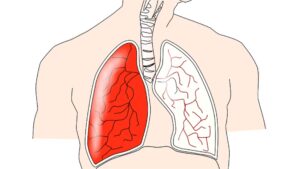Two large US studies published in The BMJ have linked hospitalisation for severe heart and lung disorders to both short- and long-term exposure to fine particulate matter (PM2.5) air pollution. All of the findings point to the lack of a safe threshold for lung and heart health. The Global Burden of Disease study estimates that exposure to PM2.5 is responsible for 4.2% of the world’s disability-adjusted life years (a measure of years lived in good health) and 7.6% of all global mortality.
In light of this extensive evidence, the World Health Organization (WHO) updated the air quality guidelines in 2021, recommending that annual average PM2.5 levels should not exceed 5 mg/m3 and 24-hour average PM2.5 levels should not exceed 15 mg/m3 on more than 3-4 days each year.
In the first study, researchers linked average daily PM2.5 levels to residential zip codes for nearly 60 million US adults (84 per cent white, 55 per cent women) aged 65 and over from 2000 to 2016. They then used Medicare insurance data to track hospital admissions over an average of eight years.
Average three-year exposure to PM2.5 was linked to higher odds of initial hospital admissions for seven major types of cardiovascular disease: ischemic heart disease, cerebrovascular disease, heart failure, cardiomyopathy, arrhythmia, valvular heart disease, and thoracic and abdominal aortic aneurysms. This association persisted even after controlling for a variety of economic, health, and social factors. Exposures between 9 and 10 mg/m3, which included the US national average of 9.7 mg/m3 during the study period, were linked to a 29% increased risk of hospital admission for cardiovascular disease when compared with exposures of 5 mg/m3 or less (the WHO air quality guideline for annual PM2.5).
On an absolute scale, the risk of hospital admission for cardiovascular disease increased from 2.59 per cent with exposures of 5 mg/m3 or less to 3.35% at exposures between 9 and 10 mg/m3. “This means that if we were able to manage to reduce annual PM2.5 below 5 ug/m3, we could avoid 23 per cent in hospital admissions for cardiovascular disease,” say the researchers.*
These cardiovascular effects persisted for at least three years after exposure to PM2.5, and susceptibility varied by age, education, access to healthcare services, and area deprivation level.
Following exposure to PM2.5, these cardiovascular effects lasted for at least three years, and susceptibility differed according to factors like age, education, access to healthcare, and degree of area deprivation. According to the researchers, following the WHO air quality guideline could have a significant positive impact on cardiovascular health overall and there may not be a safe threshold for the long-term effects of PM2.5.
“On February 7, 2024, the US Environmental Protection Agency (EPA) updated the national air quality standard for annual PM2.5 level, setting a stricter limit at no more than 9 ug/m3. This is the first update since 2012. However, it is still considerably higher than the 5 ug/m3 set by WHO. The newly published national standard was not sufficient for the protection of public health,” they added.
In the second study, hospital admissions and ER visits for respiratory, cardiovascular, and natural causes were tracked for 50 million US adults aged 18 and over from 2010 to 2016. Researchers used county-level daily PM2.5 concentrations and medical claims data. Over 10 million hospital admissions and 24 million ER visits were documented during the study period.



















